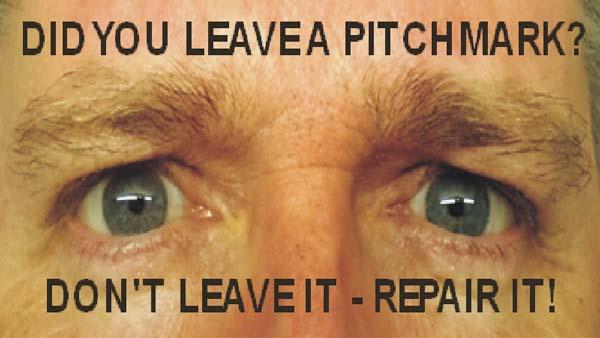 Ballmarks created by golfers, or more precisely players' refusal to fix or repair them, has been a problem nearly as old as the game itself. According to a recent study in England, convincing golfers to fix the scars they create could be as simple as refining the way in which they are asked.
Ballmarks created by golfers, or more precisely players' refusal to fix or repair them, has been a problem nearly as old as the game itself. According to a recent study in England, convincing golfers to fix the scars they create could be as simple as refining the way in which they are asked.
Golf course superintendents have used a variety of methods, including blogs, newsletters, PowerPoint presentations delivered during green committee meetings, and even signs on bulletin boards and in restrooms to communicate the significance of correctly repairing ballmarks. All have been met with varying degrees of success. It turns out, signage that reminds players that someone might be watching them resulted in a nearly 80 percent reduction in unrepaired ballmarks in a study conducted throughout June and July at a golf course in England.
The Surrey-based firm of Sport Psychology Ltd., teamed with Wimbledon Signs to post a sign on one green at Surrey Downs Golf Club that showed a pair of menacing eyes. The sign read, "Did you leave a pitchmark? Don't leave it -- repair it."
Results were compared with two nearby greens that did not have the sign.
Unrepaired ballmarks on a control green increased by 27 percent, while the number of ballmarks on the green with the signage decreased by 51 percent, creating a difference of 78 percent.
The two greens selected for the study were similar in length and design. One was 330 yards in length and the other 347, and each with a sharp left dogleg and approach shots of 90-130 yards. Both greens also had similar design features, rising 2-3 feet in elevation from front to back. Both also shared a history of suffering from unrepaired ballmarks.
Researchers measured the number of unrepaired ballmarks after one month of play.
Kansas State University research conducted in 2005 showed that unrepaired ballmarks left cavities in the putting surfaces and improperly repaired ballmarks took twice as long to heel as those that were fixed correctly. Ballmarks that were repaired incorrectly also left the worst scars compared with those that were fixed correctly or left unrepaired entirely.
According to Sport Psychology, forward-facing eyes lead golfers to focus on the sign and its message, because, according to the group's research, the eyes have a powerful emotional impact. The group also concluded that similar signage with other messages could produce the desired results regarding other challenges superintendents encounter throughout the golf course.

